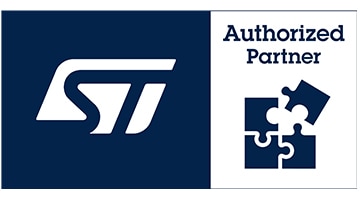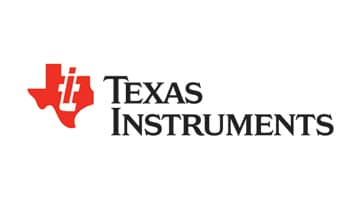Analog Devices LT8390 | Demoboard DC2457A
60V Low EMI Synchronous 4-Switch Buck-Boost Voltage Regulator
Details
| Topologie | Abwärts- und Aufwärtswandler |
| Eingangsspannung | 4-60 V |
| Ausgang 1 | 15 V / 4 A |
| IC-Revision | 1 |
Beschreibung
Demonstration circuit DC2457A is a 12V, 4A, 4-switchsynchronous buck-boost regulator featuring low EMI noiseand small footprint. It runs at 400kHz switching frequency.Spread spectrum frequency modulation (SSFM) can beturned on with a simple jumper, reducing EMI. DC2457Aalso comes with other low EMI features including optimizedlayout, input and output filters. It passes CISPR 25 class5 conducted and radiated EMI.The operating input voltage range of DC2457A is from 4V to60V. The output voltage and EN/UVLO, are all programmedby resistor dividers. EN/UVLO is set so the circuit will turnoff when the input voltage falls below 4V and will turn onwhen the input voltage rises above 5V.DC2457A features MOSFETs that complement the 5Vgate drive of the LT8390® to achieve high efficiency. 60VMOSFETs are used on the input side of the 4-switch topologywhile 25V MOSFETs are used on the output side. Allthose MOSFETs are 3.3mm × 3.3mm footprint. Ceramiccapacitors are used at both the circuit input and outputbecause of their small size and high ripple current capability.In addition to ceramic capacitors, there are two aluminumpolymer capacitors on the output. The input also has twoaluminum polymer capacitors.The CTRL input is pulled up to the VREF pin through a 0Ωresistor to set the output current limit to its maximum,and an external voltage on CTRL can be used to lower thecurrent limit if the resistor is removed. A capacitor at theSS pin programs soft-start.The PGOOD is status flag indicates when output voltageis within ±10% of final regulation voltage. The LT8390’s proprietary peak current mode buck-boostarchitecture ensures DC2457A runs either in discontinuousconduction mode (DCM) or pulse-skipping mode (PSM)without reversed inductor current. Both of them enhancethe light load efficiency.To improve the EMI performance, the LT8390 has spreadspectrum frequency modulation. With the SYNC/SPRDpin tied to INTVCC, LT8390 starts to spread its switchingfrequency ±15% around the programmed oscillatorfrequency.There is an EMI filter on the input of DC2457A. There is alsoa small ferrite bead output filter. These filters, combinedwith proper board layout and SSFM are effective to helpthe circuit pass CISPR 25 class 5 conducted and radiatedEMI. Please follow the recommended layout and four-layerthickness of DC2457A for low EMI applications.The demo circuit is designed to be easily reconfigured tomany other applications, including the example schematicsin the data sheet. Consult the factory for assistance.The LT8390EUFD is available in a thermally enhanced 28-lead (4mm × 5mm) plastic QFN package. The LT8390 datasheet gives a complete description of the part, operationand applications information. The LT8390 data sheet mustbe read in conjunction with this demo manual to properlyuse or modify demo circuit DC2457A
Weiterführende Informationen
Artikeldaten
| Artikel Nr. | Datenblatt | Simulation | Downloads | Status | Produktserie | f (mm) | L (µH) | IRP,40K (A) | ISAT,10% (A) | ISAT,30% (A) | RDC (mΩ) | fres (MHz) | Material | Z @ 100 MHz (Ω) | Zmax (Ω) | Testbedingung Zmax | IR 2 (mA) | RDC max. (Ω) | Typ | Pins | Montageart | L (mm) | H (mm) | IR (mA) | Arbeitsspannung (V (AC)) | Muster | |
|---|---|---|---|---|---|---|---|---|---|---|---|---|---|---|---|---|---|---|---|---|---|---|---|---|---|---|---|
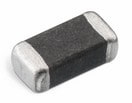 | 742792118 | SPEC | 9 Dateien | Aktiv i| Produktion ist aktiv. Erwartete Lebenszeit: >10 Jahre. | WE-CBF SMT-Ferrit | – | – | – | – | – | – | – | – | 600 | 650 | 80 MHz | 2500 | 0.07 | Hochstrom | – | SMT | 3.2 | 1.1 | 1500 | – | ||
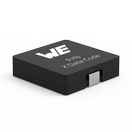 | 744314150 | SPEC | 9 Dateien | Aktiv i| Produktion ist aktiv. Erwartete Lebenszeit: >10 Jahre. | WE-HCI SMT-Hochstrominduktivität | – | 1.5 | 16.4 | 4 | 11 | 4.3 | 110 | Superflux | – | – | – | – | 0.00473 | – | 2 | SMT | 7 | 4.8 | – | – | ||
 | 744325420 | SPEC | 9 Dateien | Aktiv i| Produktion ist aktiv. Erwartete Lebenszeit: >10 Jahre. | WE-HCI SMT-Hochstrominduktivität | – | 4.2 | 15.4 | 5 | 14 | 7.1 | 33 | Superflux | – | – | – | – | 0.00787 | – | 2 | SMT | 10.5 | 4.7 | – | – | ||
 | 702933000 | SPEC | – | 3 Dateien | Aktiv i| Produktion ist aktiv. Erwartete Lebenszeit: >10 Jahre. | WA-SNSR Self-Retaining Spacer | 4.8 | – | – | – | – | – | – | PA66 | – | – | – | – | – | – | – | – | 9.5 | – | – | – | |
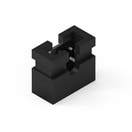 | 60800213421 | SPEC | – | 3 Dateien | Aktiv i| Produktion ist aktiv. Erwartete Lebenszeit: >10 Jahre. | WR-PHD Jumper | – | – | – | – | – | – | – | – | – | – | – | – | – | – | 2 | – | – | – | 3000 | 200 | |
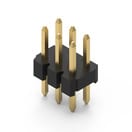 | 62000621121 | SPEC | – | 7 Dateien | Aktiv i| Produktion ist aktiv. Erwartete Lebenszeit: >10 Jahre. | WR-PHD Pin Header | – | – | – | – | – | – | – | – | – | – | – | – | – | Gerade | 6 | THT | 6 | – | 2000 | 200 |
| Artikel Nr. | Datenblatt | Simulation | |
|---|---|---|---|
 | 742792118 | SPEC | |
 | 744314150 | SPEC | |
 | 744325420 | SPEC | |
 | 702933000 | SPEC | – |
 | 60800213421 | SPEC | – |
 | 62000621121 | SPEC | – |
| Muster |
|---|
| Artikel Nr. | Datenblatt | Simulation | Downloads | Status | Produktserie | f (mm) | L (µH) | IRP,40K (A) | ISAT,10% (A) | ISAT,30% (A) | RDC (mΩ) | fres (MHz) | Material | Z @ 100 MHz (Ω) | Zmax (Ω) | Testbedingung Zmax | IR 2 (mA) | RDC max. (Ω) | Typ | Pins | Montageart | L (mm) | H (mm) | IR (mA) | Arbeitsspannung (V (AC)) | Muster |
|---|





